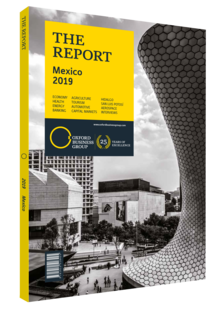Eduardo Sojo Garza-Aldape, Director-General, National Laboratory of Public Policy at the Centre for Research and Teaching in Economics: Interview

Interview: Eduardo Sojo Garza-Aldape
What are the aims of the National Development Plan (Plan Nacional de Desarrollo, PND) 2019-24?
EDUARDO SOJO: The most important factors driving the country’s economic growth as outlined in the PND are healthy public finances, security, anti-corruption measures, the US-Mexico-Canada Agreement (USMCA), financial inclusion and energy.
The government’s main focus is on strengthening security by developing the national guard. However, it does not outline reforms for the public prosecution service or give any indication of how many judges per inhabitant are necessary. Although security is presented very positively in the plan, it needs to ensure that the rule of law is fully integrated in the government’s development strategy.
The plan is aligned with both the aims of the USMCA and the country’s objectives of remaining open to global trade, maintaining a healthy trade balance and public finances, and fostering long-term economic stability. However, the PND lacks specific strategies to address key issues such as environmental sustainability and energy usage, financial inclusion and formalisation.
With regards to energy and renewable resources, the official document does not provide a detailed outlook for the sector’s development. Instead, the document only mentions that there are some isolated rural communities where it is necessary for electricity to be generated using renewables. However, the annex explicitly states the government’s commitment to promoting clean energies and meeting the aims of the Paris Agreement.
In terms of financial inclusion, the official PND states that the People’s Welfare Bank will expand from 500 branches to 7000 – this is a very ambitious goal considering the current constraints to public finance. The annex, meanwhile, outlines specific strategies to improve access to financial services, with an emphasis on the most disadvantaged areas. Overall, main issue of the PND is its inconsistency with the annex drafted by the Ministry of Finance.
In what ways can individual states promote socio-economic development?
SOJO: Mexico’s federal government was highly centralised until the 1990s, when health and education responsibilities and resources were transferred to the local level. Under President Vicente Fox, states began to develop more local public policies that sought to tackle their individual economic, social and environmental challenges. Following this, the federal government launched a series of mechanisms, programmes and institutions to boost economic activity throughout the country, such as ProMéxico, the Programme of Incentives for Innovation and the Tourism Promotion Council.
These institutions were designed to support regional efforts to attract investment and generate economic development. However, in 2018 President Andrés Manuel López Obrador announced that these organisations would cease operations. Since then, state governments have been looking to fill the gap by formulating their own policies to foster socio-economic growth, but some regions have faced difficulties due to budgetary limitations.
As a result, some states are looking to create alliances in order to share resources. These agreements include the Oaxaca Pact in the south and south-east of the country – which particularly suffers from an infrastructure gap compared to the rest of the country – and the alliance between the Bajío, central and western regions. This system of collaboration presents promising opportunities for the future but their growth will depend on federal support, which is largely concentrated on specific projects such as the Maya train, the Dos Bocas refinery, the Santa Lucía Airport and Petróleos Mexicanos, leaving almost no public funding for projects in the rest of the country.
You have reached the limit of premium articles you can view for free.
Choose from the options below to purchase print or digital editions of our Reports. You can also purchase a website subscription giving you unlimited access to all of our Reports online for 12 months.
If you have already purchased this Report or have a website subscription, please login to continue.

